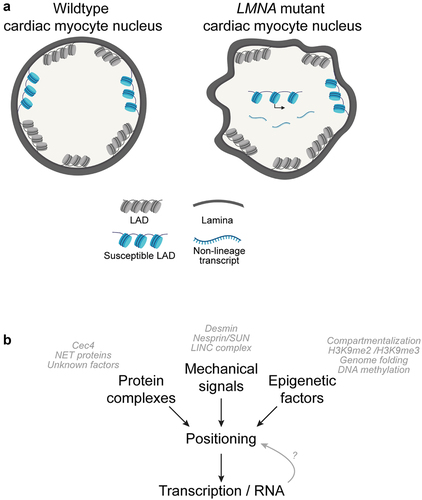Figures & data
Figure 1. Aberrant chromatin positioning is implicated in laminopathy disease. (a) LMNA mutant cells exhibit defects in gross nuclear morphology and feature aberrantly localized regions of chromatin that are normally lamina-associated in cells without disease. Aberrantly expressed non-lineage genes are correlated to regions that lose lamina-association in pathogenic LMNA mutant cardiac myocytes. (b) Multiple molecular factors and pathways contribute to normal genome organization and integrity, including positioning factors (such as tethering proteins), mechanical force, and epigenetic factors. Laminopathies have been linked to a number of aberrant phenotypes in these pathways, and it is interesting to consider if abnormal chromatin positioning/genome organization is a shared phenotype in various pathogenic LMNA mutations.

